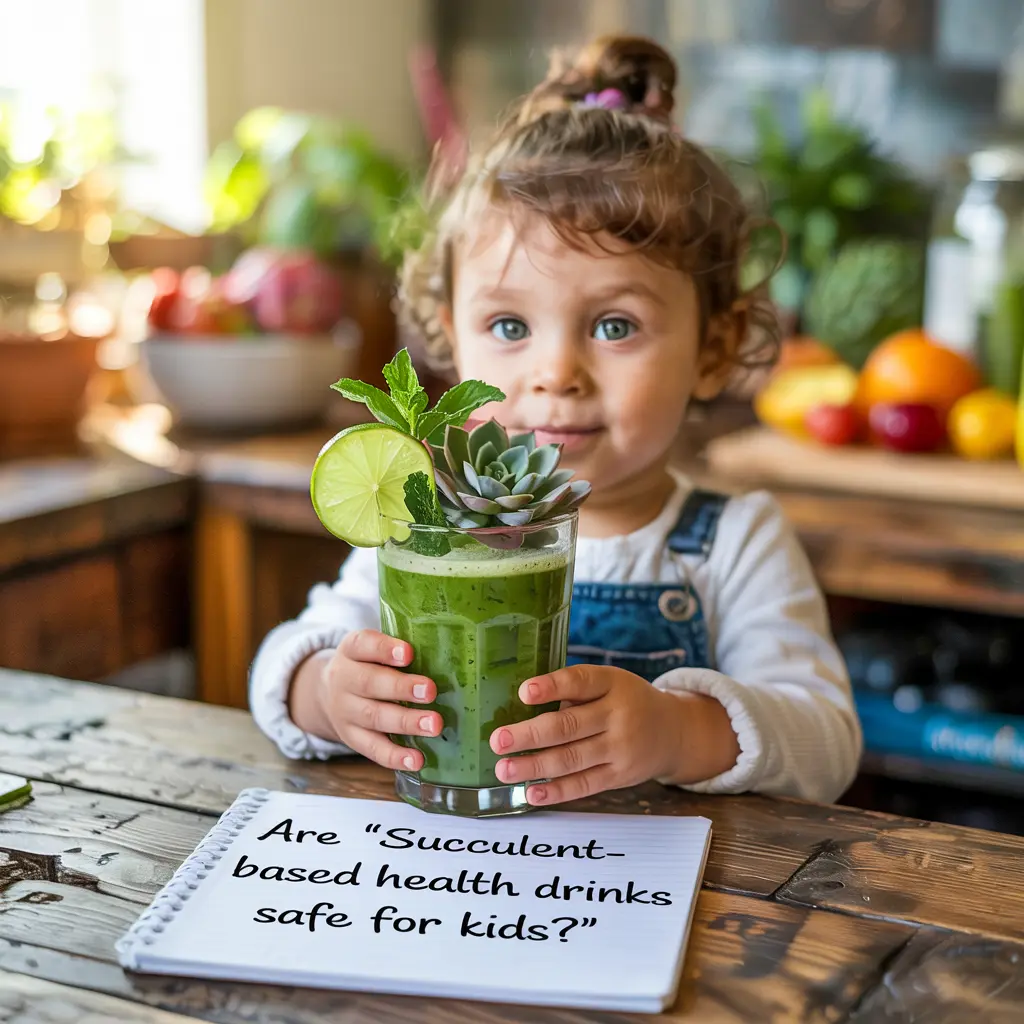
Are Succulent-Based Health Drinks Safe for Kids?
Health trends come and go. Lately, succulent-based drinks are gaining popularity. Parents wonder: are these drinks safe for children?
This article explores the facts, benefits, risks, and expert opinions. Let’s dive in.
What Are Succulent-Based Health Drinks?
Succulents are water-storing plants. Popular examples include:
-
Aloe vera
-
Prickly pear (nopal cactus)
-
Agave
-
Cactus water
These plants often appear in drinks meant to hydrate, detox, or boost energy.
Why Parents Are Curious
Health-conscious parents look for better beverage options.
They avoid sodas and sugary juices. They want vitamins, minerals, and natural ingredients.
Succulent drinks seem like a smart, plant-based choice.
But are they truly safe?
Common Succulents Used in Drinks
1. Aloe Vera
Found in juices, gels, and wellness shots.
Benefits:
-
Soothes digestion
-
Contains vitamins A, C, and E
-
Hydrates the body
Caution:
Raw aloe contains aloin, a laxative. Processed drinks remove this, but always check the label.
2. Prickly Pear
Made from cactus pads or fruit.
Benefits:
-
Rich in fiber
-
High in antioxidants
-
Helps with blood sugar control
Caution:
Excess fiber may cause gas or bloating in sensitive stomachs.
3. Agave
Agave syrup sweetens many drinks.
Benefits:
-
Natural sugar alternative
-
Sweeter than honey, used in small amounts
Caution:
High in fructose. Not ideal for frequent use in kids’ diets.
4. Cactus Water
Usually comes from prickly pear.
Benefits:
-
Light, refreshing, low in sugar
-
Contains electrolytes and antioxidants
Caution:
Some brands add sugar or preservatives. Read labels carefully.
Are These Drinks Nutritionally Beneficial?
In moderation, yes. Succulent drinks offer vitamins, hydration, and mild digestive support.
But they’re not miracle drinks. Don’t expect instant health changes.
They should complement a balanced diet, not replace water, milk, or meals.
What Pediatricians Say
Pediatricians urge caution. Here’s why:
-
Children’s digestive systems are sensitive.
Strong plant compounds may cause cramping or diarrhea. -
Label confusion is common.
Some aloe drinks contain unfiltered gel or aloin. These can irritate a child’s gut. -
Sweetened drinks add sugar.
Even “natural” options can spike blood sugar. -
No standard dosage exists.
The right amount for adults might be too much for kids.
Dr. Emily Ross, pediatric nutritionist, says:
“Succulent-based drinks can be safe if processed and sugar-free. But moderation is key.”
Are There Age Restrictions?
Most experts agree:
-
Under age 1: Avoid completely
-
Ages 1–3: Offer only under guidance, and in very small amounts
-
Ages 4–10: Use occasional servings (2–4 oz), no more than once a week
-
Teens: Can consume more, but still not daily
Always consult your pediatrician first.
Signs of Bad Reactions
Watch for these symptoms:
-
Stomach cramps
-
Diarrhea
-
Allergic rashes
-
Nausea or vomiting
-
Increased thirst (linked to sugar content)
Stop use immediately and seek medical advice if symptoms appear.
Healthy Ways to Include Succulent Drinks
If your doctor approves, here’s how to offer them safely:
1. Dilute with Water
Start with a 1:1 mix of succulent drink and plain water.
This lowers sugar and plant compound concentration.
2. Choose Organic Brands
Pick trusted brands with clear labels.
Avoid artificial colors, preservatives, or unlisted ingredients.
3. Serve Cold, Not Icy
Cold drinks are easier on small tummies. Avoid super-chilled drinks, which may cause discomfort.
4. Avoid on Empty Stomach
Serve succulent drinks after meals. They may irritate an empty stomach.
5. Use as a Treat, Not Daily Routine
Offer once a week. Rotate with other healthy drinks like coconut water, herbal teas, or infused water.
DIY Alternatives
Want more control over ingredients? Try homemade options.
Aloe Lemon Drink
-
1 tsp aloe vera gel (food-grade)
-
1 cup water
-
1 tsp honey (for ages 1+)
-
1 tsp lemon juice
Blend and serve chilled.
Cactus Pear Smoothie
-
1 cactus pear, peeled
-
½ banana
-
½ cup plain yogurt
-
½ cup water
Blend until smooth. Serve fresh.
Always test new drinks in small amounts first.
Who Should Avoid Succulent Drinks?
Certain children should avoid succulent drinks entirely:
-
Infants under 12 months
-
Children with IBS or chronic digestive issues
-
Those with allergies to aloe or cactus family plants
-
Kids on medication (check for interactions)
When in doubt, skip it or consult a doctor.
The Marketing Trap
Watch out for clever packaging.
Some drinks claim “100% aloe” or “plant-powered hydration.”
Read the ingredients. Many contain added sugars, flavors, or minimal plant extract.
Tip: Choose products with fewer than five ingredients.
Cost vs. Benefit
Succulent drinks often cost more than regular juices or milk.
Before buying, ask:
-
Will my child benefit from this?
-
Is it replacing a healthier option?
-
Can I make a similar drink at home?
Sometimes, water and whole fruits offer more value.
Cultural Context
Succulent drinks are not new.
In Latin America, Asia, and Africa, aloe and cactus drinks are common. Parents pass down recipes and trust traditional use.
Still, traditional doesn’t always mean safe for kids. Modern versions often differ in strength and preparation.
Final Thoughts
Are succulent-based health drinks safe for kids? Yes, but only when:
-
Given in small amounts
-
Doctor-approved
-
Free from aloin or added sugars
-
Offered as an occasional treat
They should not replace water, milk, or nutrient-rich meals.
Stay informed. Read labels. Talk to your child’s doctor. And when in doubt—less is more.
Remember: A healthy child doesn’t need trendy drinks. Simple nutrition wins every time.



